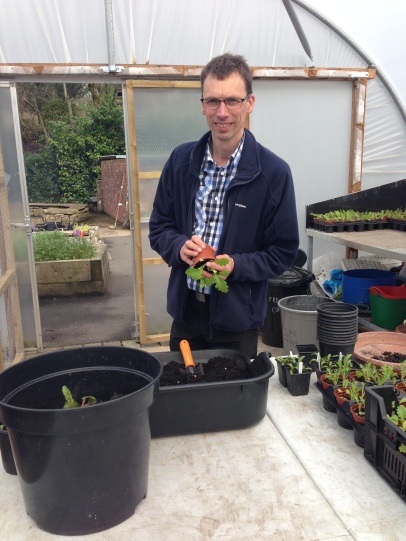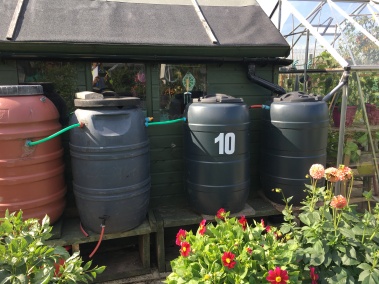
Allotments are great places for community engagement and swapping plants with fellow plot holders is all part and part of the culture.
It’s a great way of getting rid of those excess seedlings which you didn’t expect to germinate.
However, always ensure that before you introduce anything new that they are free from pest and diseases.
On occasions I have accidentally brought whitefly, greenfly and a host of other pests into my greenhouse when accepting a kind gesture.
Always look above, under and in the axis of the leaves for any eggs, larva or adults. Check the underside of the pot for slugs and even remove from the pot to check for eggs.
Now is the time to sow spring cabbage. Once germinated prick out into 3.5in pots and then transplant into a weed free bed, 18in apart during September/ October. The bottom leaves should be level with the soil surface. The bed shouldn’t be too fertile as we don’t want the plant to put too much lush growth on before the onset of winter. Weed regularly and protect from pigeons.
Continue to harvest French and runner beans daily. If you leave them too long they will become tough and stringy.
Courgettes are the same, except leaving them too long results in you growing a marrow.
Continue feeding to replace used and leached nutrients. For a quick acting fertiliser use a liquid feed such as a seaweed or a home-made /nettle type. For a longer lasting fertiliser use bone meal or fish, blood and bone.
Here in the North West of England we get our fair share of rain. Connecting a hose from your greenhouse gutter to a water barrel and harvesting your own water is certainly not a new invention.

However, I tend to find during a dry spell it soon gets used up. On a visit to a local allotment site recently I noticed a set-up which allowed water to run from barrel to barrel. A few snails and pond weed in each barrel helps keep the water fresh.
We have started to harvest potatoes grown in sacks in the polytunnel. The warm climate certainly encourages an early crop.
Avoid watering before harvesting as this prevents a muddy mess. Cut the tops off and carefully tip the compost out of the bag.
Harvest as required and cook with a sprig of mint.
Strawberries are now in season and require picking whilst a bright red colour. If you leave them too long, they tend to go deep red and soft to touch.
Remember to net them over as blackbirds are also admirers.
In view of the imminent slug pellet ban why not try using nematodes as a method of control. Nematodes are microscopic worms which seek out slugs within the soil and kills them within 3 days.
Add a sachet of nematodes to a watering can and apply to the required area. These sachets come in two sizes, one to treat 40 metres sq or one to treat 100 metres sq.
Each application releases approximately 300,000 nematodes for every square metre of soil, giving at least six weeks control of slugs.
Apply from March through to October on moist soils when temperatures are above 5 degrees C. The benefits of using this method is that pets, children and wildlife are safe and need not be excluded.
That’s all for now, enjoy the fruits of your labour.
Matt.

You must be logged in to post a comment.